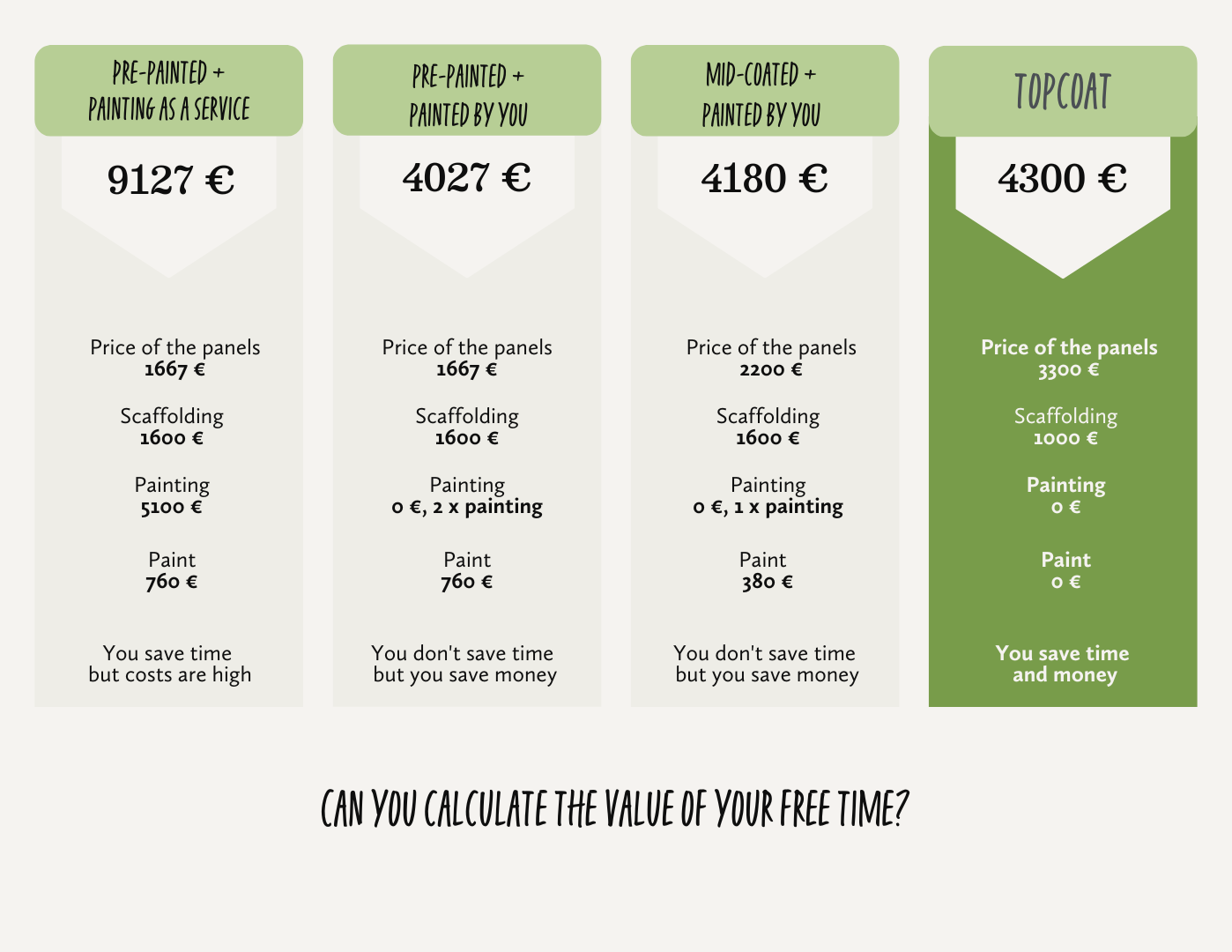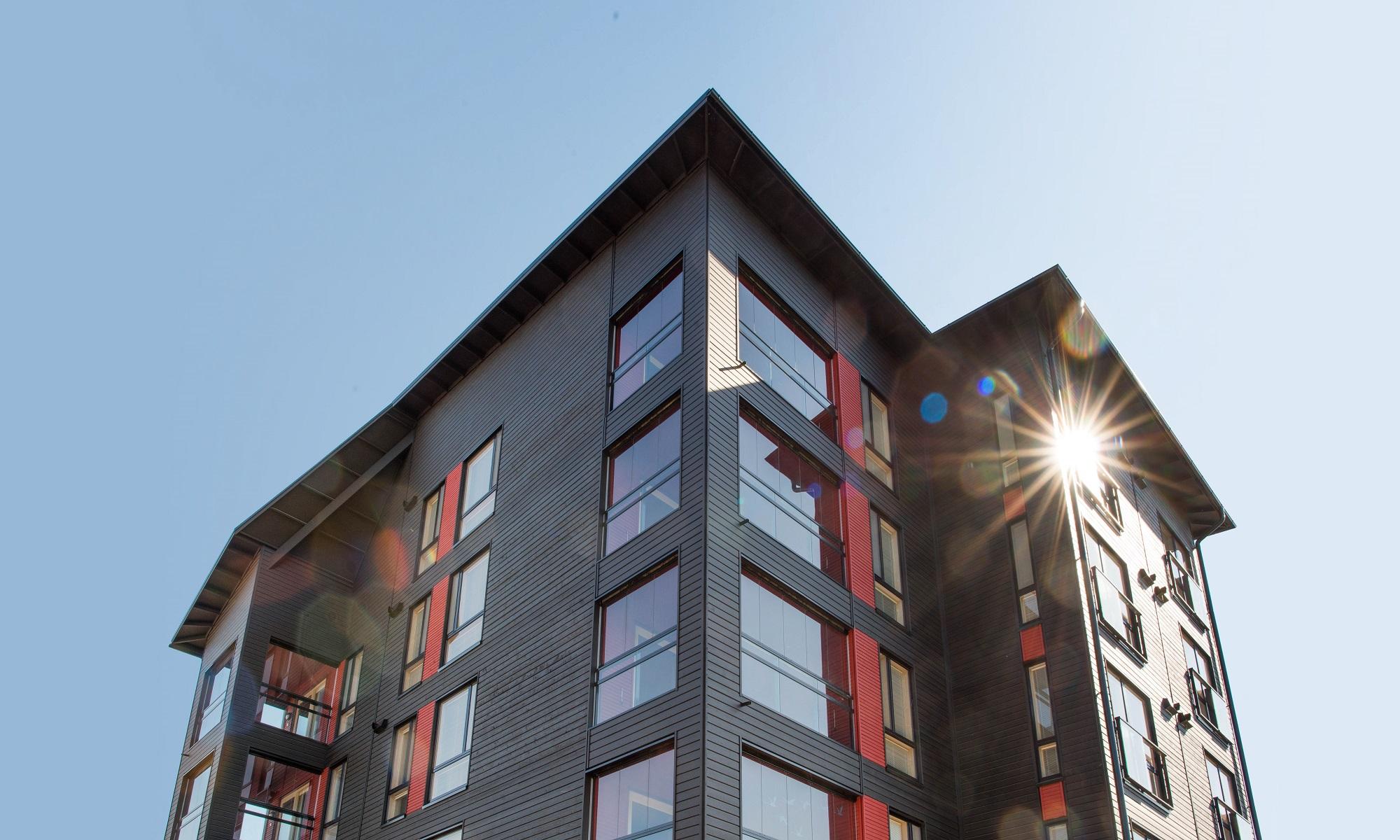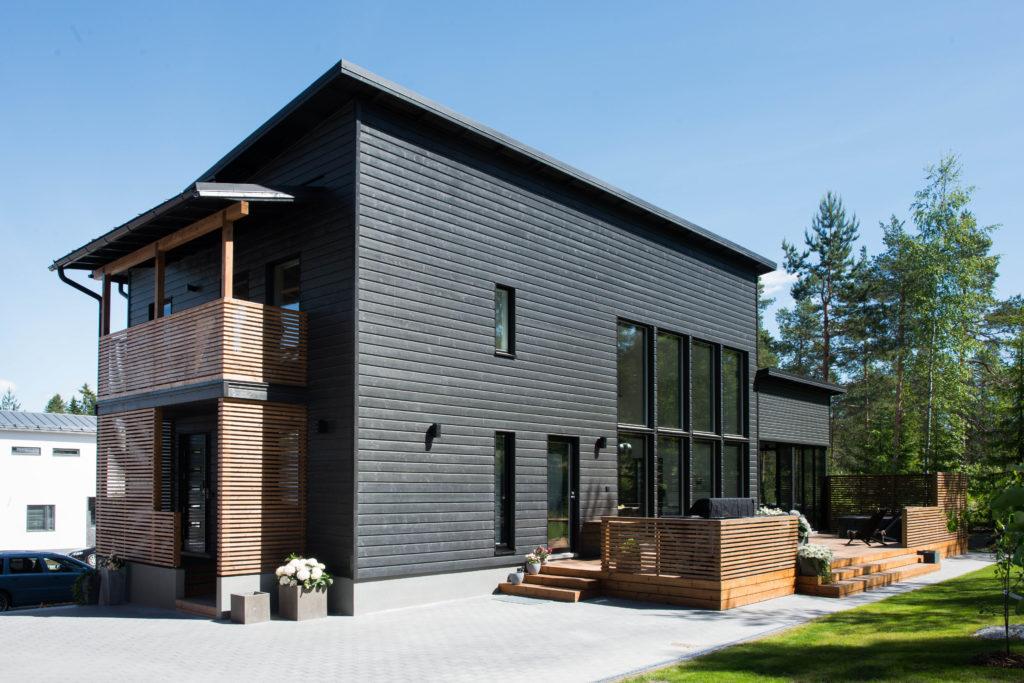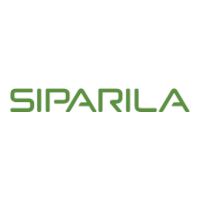Siparila has been producing top-coated TOPCOAT® and GOLD PRO facade panels with hidden fastening for years. Despite the excellent properties, the panels have received too little attention because there is a stubborn myth among builders and consumers that a hidden fastening and top-coated panel would be more expensive than an untreated or primed one. Now is the time to correct all these claims.
Many people think that a pre-painted and concealed façade panel is more expensive than an unpainted or primed one. It is, if you look at the price per linear metre of the panel alone. However, if all costs up to the completion of the façade are included, the total cost of a pre-painted concealed panel is about 20% cheaper than a primed panel (see calculation below).
Additional costs arise from paint, racks, and labor
The differences between the panels vary greatly depending on the treatment, and different treatments may cause possible additional costs.
The industrially top-coated panel is durable because the thick layer of paint already painted at the factory provides long-lasting protection against mold, moisture, and UV rays. Thus, the panel is already protected in the best possible way upon arrival at the construction site.
A top-coated panel is already much more resistant to moisture - it is primed and top-coated once. Once the topcoated panel has been installed on the wall, the nail joints need to be treated and the whole panel painted again.
A completely unpainted panel, on the other hand, arrives at the site in a bundle wrapped in plastic, and the plastic does not really protect against moisture, which can lead to mould growth. Fully unpainted panels should therefore be painted as soon as possible after installation, but the weather will dictate the timing.
Additional costs, therefore, arise from paint, racks, and labor. Many people even think too optimistically that painting can be done in a few days, e.g., in summer vacation. However, painting is time-consuming; the job may require 5–7 days. In addition, the painting job may be insufficient, so that the repair will take more days. The table below describes the costs for primed, self-primed, and TOPCOAT panels.
Cost comparison TOPCOAT®

The topcoated panel has significant advantages
The top-coated panel has clear advantages from the point of view of installation and durability.
Advantages of a top-coated panel:
1. Mold does not remain under the paint layers because the industrial surface treatment at our factory prevents mold damage to the panels.
2. Weather can't ruin the painting of the cladding because already painted exterior cladding panels do not need to be repainted on the construction site. Only the cut surfaces require treatment.
3. Because painting is not needed, no matter the weather.
You may have to wait a long time for optimal painting weather because if the humidity is over 80%, the paint will not dry evenly and may crack. Too cold or too hot weather prevents the paint from sticking evenly. Too much sunlight, on the other hand, dries the paint too quickly, and it doesn't have time to stick to the wood well enough.
4. The paint does not begin to peel due to the wrong type of paint, painting technique, or painting.
5. Moisture does not get into the wood cells from the nail stems because they are hidden under the jointing. In panels that can be nailed on, the nail heads break the paint surface, allowing moisture to enter the wood.
JVR-Rakenne relies on Siparila TOPCOAT and GOLD PRO panels
JVR-Rakenne Oy is a pioneer in solid wood element construction. JVR-Rakenne creates apartment buildings of the future with a smaller carbon footprint and lower life cycle costs. In these buildings living is more pleasant, safer, and less burdensome regarding the environment.
TOPCOAT and GOLD PRO are available with two fasteners: nail and hook fasteners, which are hidden fasteners. Thanks to the hidden fastening, the finished surface is intact, nail marks do not need to be treated afterward, and moisture does not get inside the panel.
Tuomo Hyyppä from JVR-Rakenne says the company has used concealed and top-coated panels for ten years. Cooperation with Siparila has already started before the existence of JVR-Rakenne. Hyyppä has been in the business for years, and previous companies he has been working for have been looking for top-coated facade panels for projects. Since then, Siparila's products have been found. The products have followed Hyyppä and construction projects ever since.
The absolute advantage of the top-coated panel with concealed fastening is that the facade can be made at any time and is never tied to the season. According to Hyyppä, it also makes it possible to stay on schedule:
"Construction projects have exact schedules, and being late is fined, sometimes heavily. When using Siparila's TOPCOAT, there has never been a need to consider fines due to a delayed facade."
TOPCOAT is the right solution for the customer and the environment
"As a builder, we always look for long-lasting solutions that benefit users, the environment, and society. When we get to the same table with the designer at the beginning of the project, we always recommend a top-coated and hidden fastening system of panels for buildings. In this way, the facades of the buildings become durable, really neat, and above all, they become cheaper overall than when using unpainted or primed panels," says Hyyppä.
In addition, according to building regulations, the panels used in apartment buildings must be fireproof up to the height of the first three meters. Emergency exits must be constructed of fire-retardant material. Siparila's products are also available with fire-retardant, so JVR-Rakenne gets everything ready from Siparila as required by building regulations.
"The myth of the expensiveness of a top-coated panel that lives can be dispelled. After all, we are not irresponsible in that we would willingly put money into a solution that is out of our and the apartment owner's wallets. We genuinely use solutions in the best interest of the customer and the environment," sums up Hyyppä.


